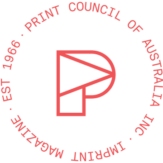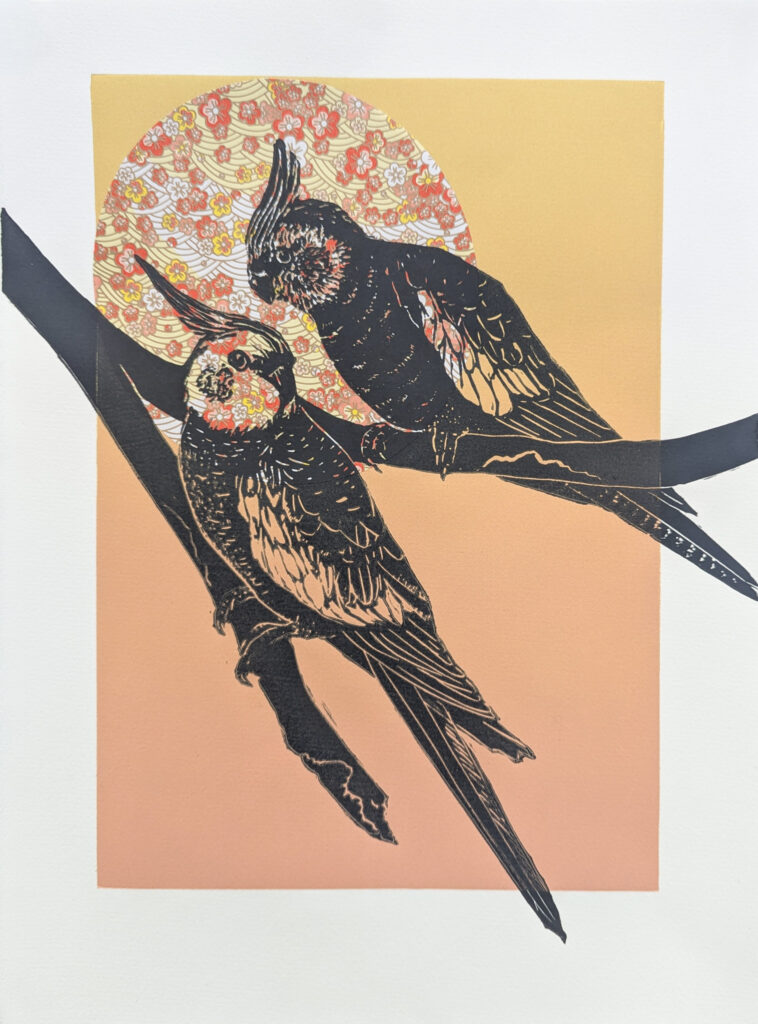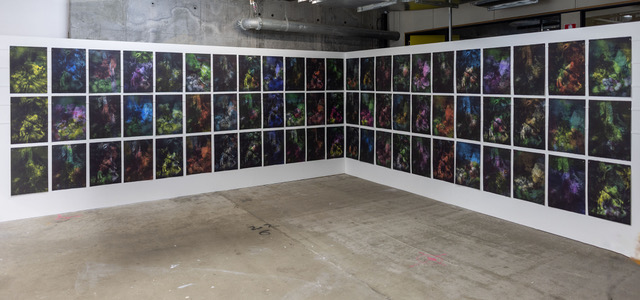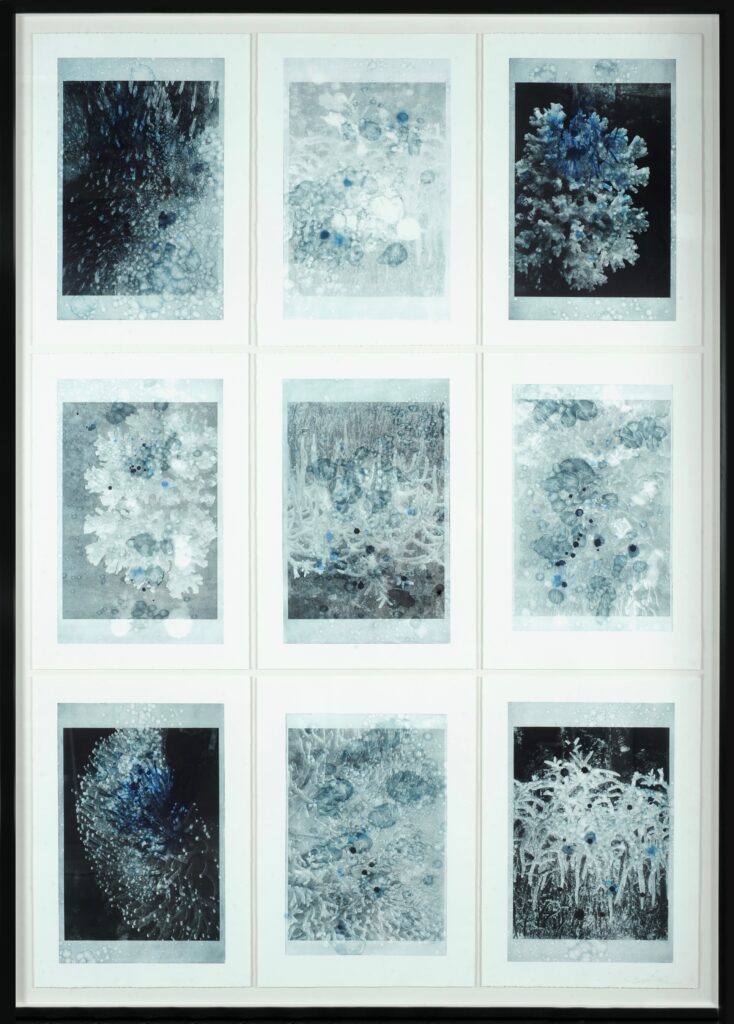Above:
Head in the Clouds 1 & 2, 2023, monoprint on Somerset paper, 76 x 112 cm, unique state
Below:
Yellow Figure 1, 2024, monoprint on Magnani Aquarelle paper, 76 x 56 cm, unique state
Yellow Figure 2, 2024, monoprint on Magnani Aquarelle paper, 76 x 56 cm, unique state
Orange Red Figure, 2024, monoprint on Magnani Aquarelle paper, 18 x 56 cm, unique state
Quoll Cloud Child, 2024, monoprint on Magnani Aquarelle paper, 20 x 20 cm, unique state
Flight, 2024, monoprint on Magnani Aquarelle paper, 20 x 20 cm, unique state
Blue Green Book, 2024, double-sided monoprint on Magnani Aquarelle paper, 13 x 15 cm variable length and formation, unique state
Orange Blue Book, 2024, double-sided monoprint on Magnani Aquarelle paper, 13 x 19 cm, variable length and formation, unique state
Tree Figure, 2024, double-sided monoprint on Magnani Aquarelle paper, 19 x 13 cm in glass dome with wooden base, unique state
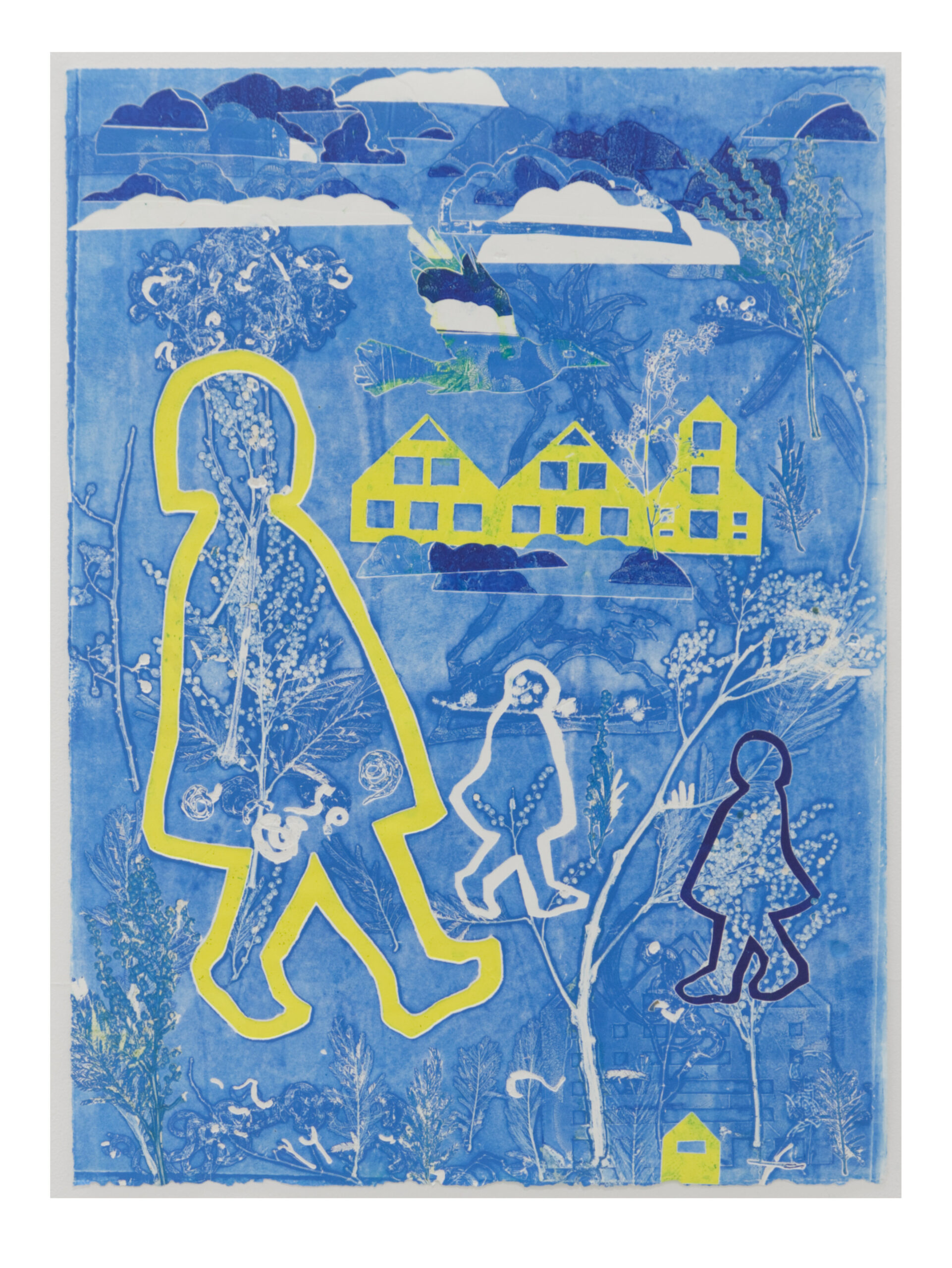
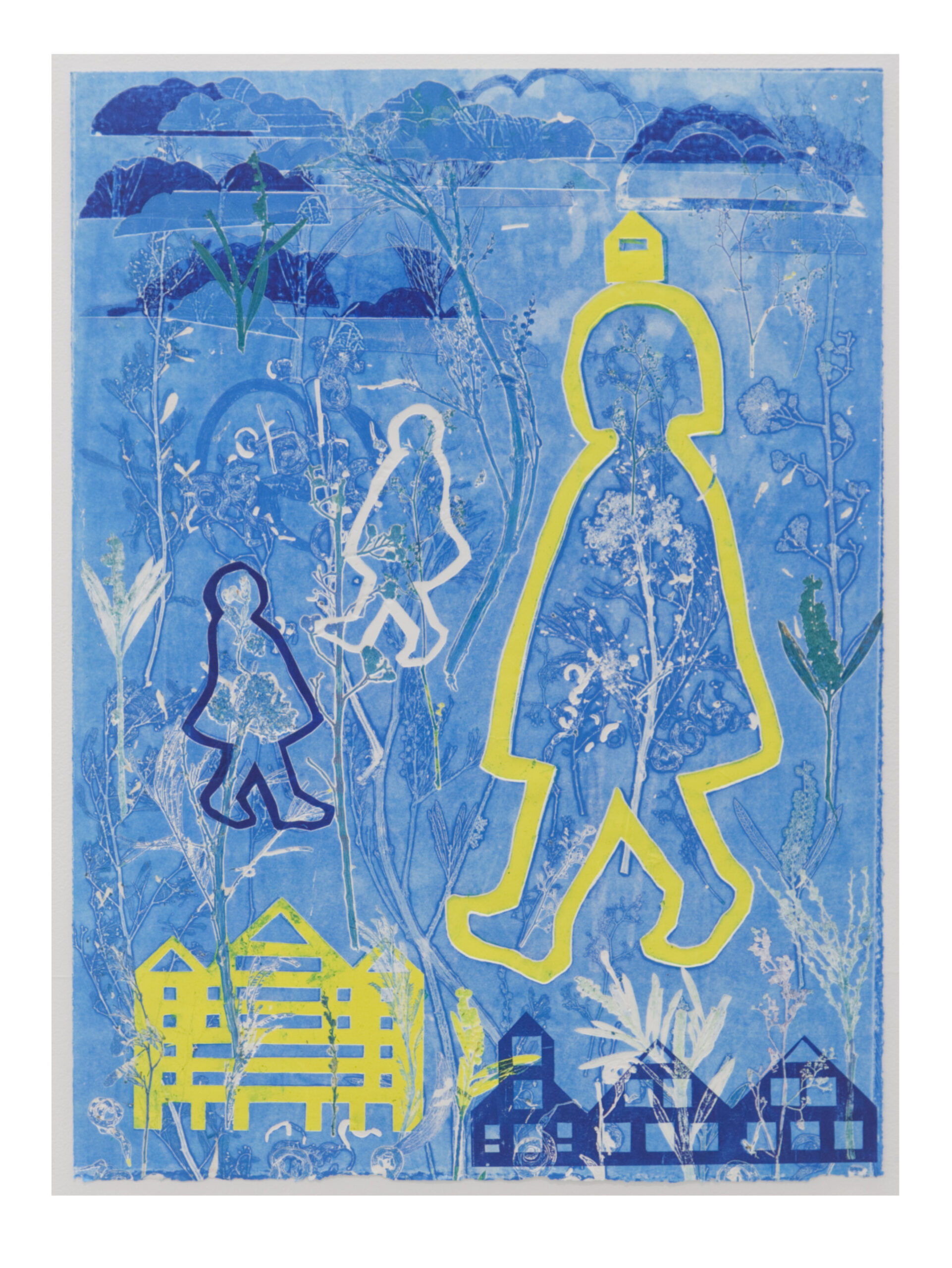

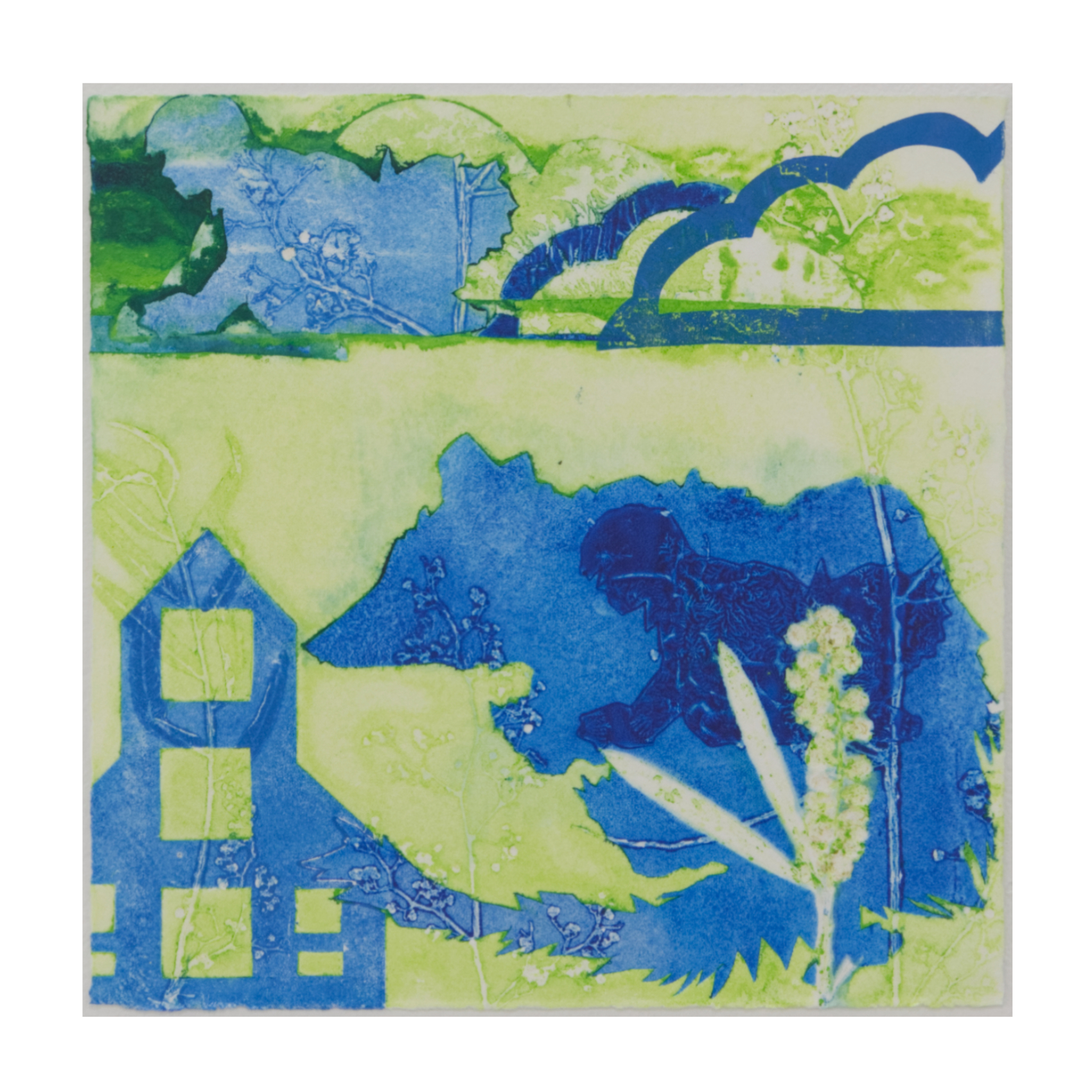
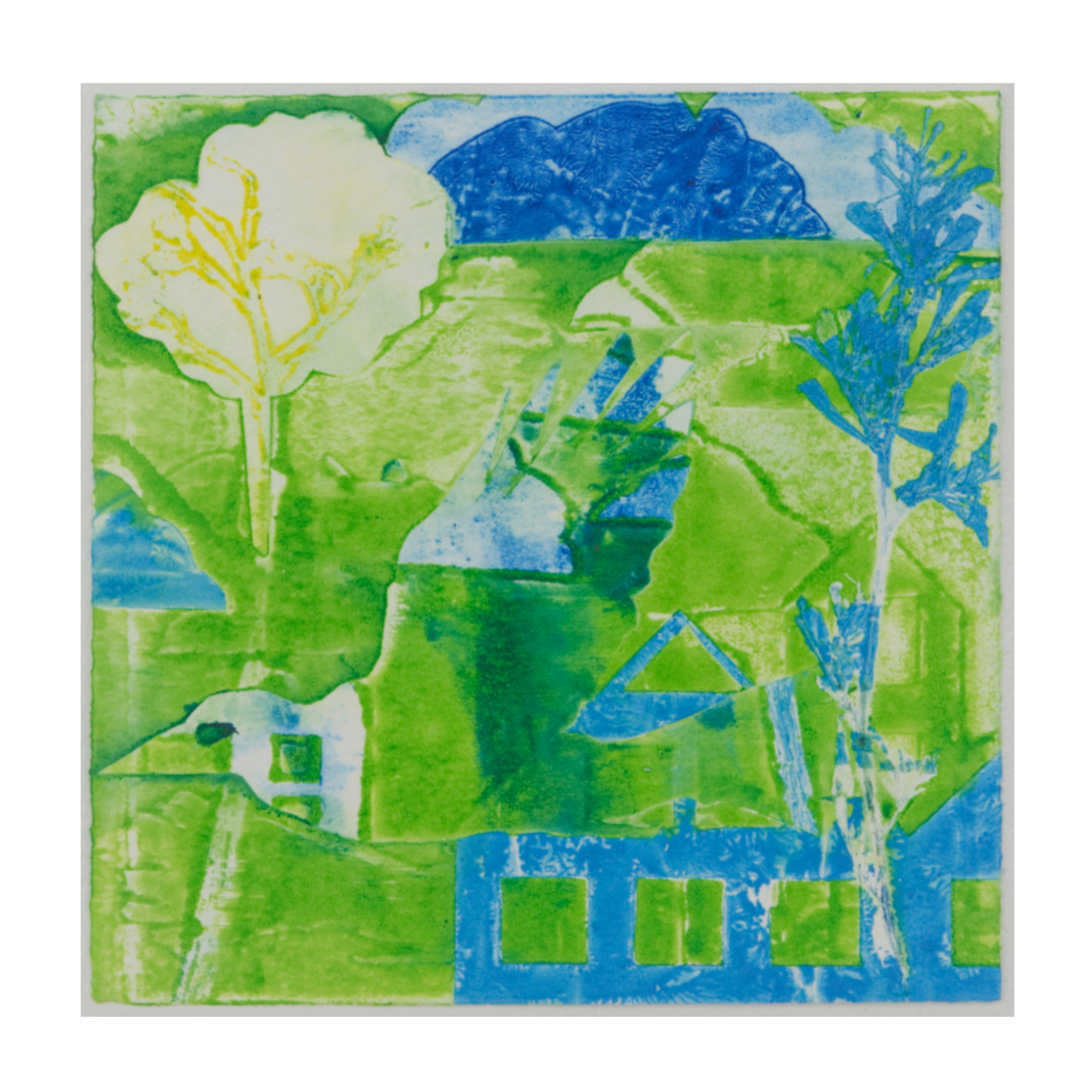
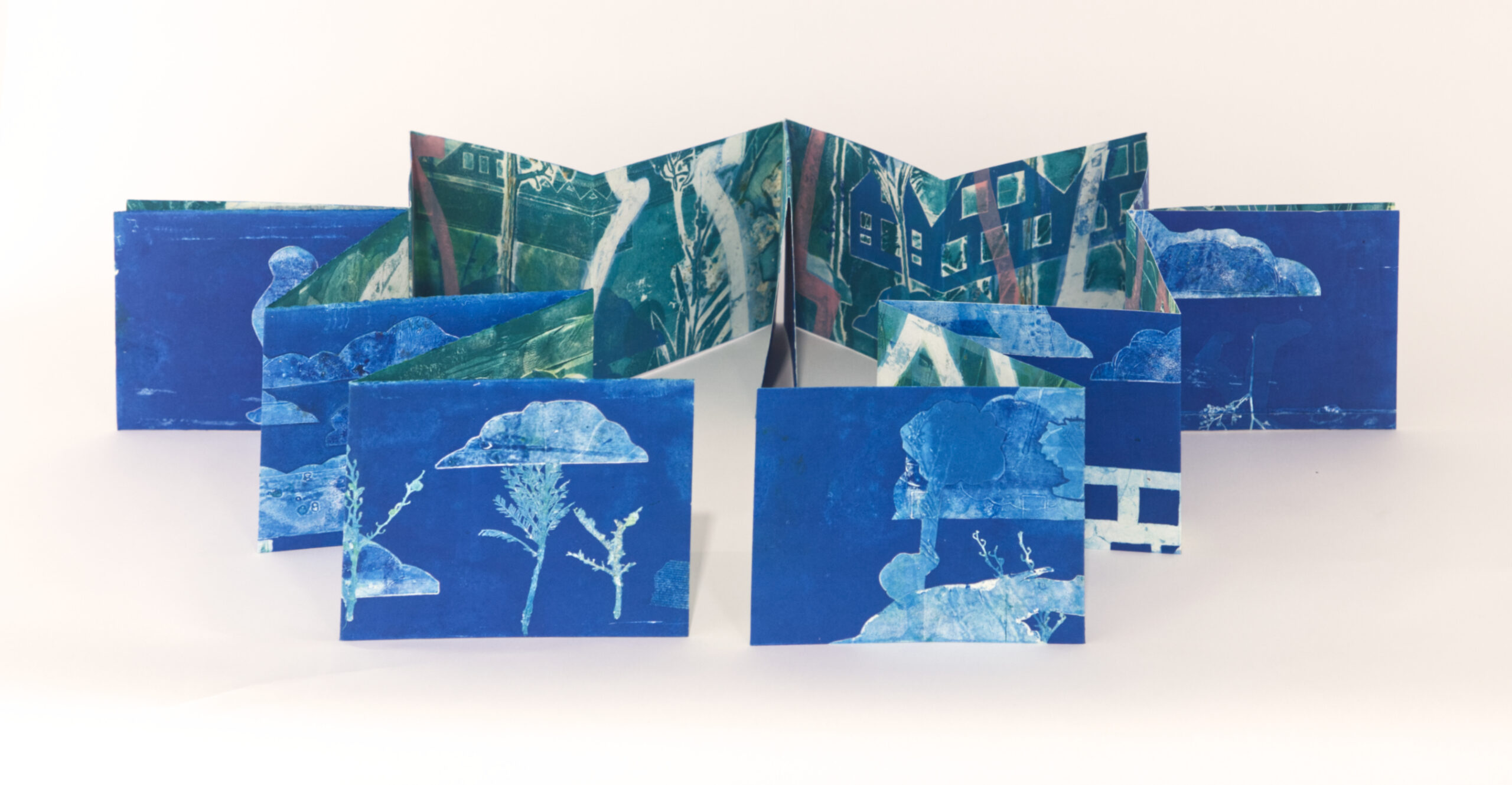
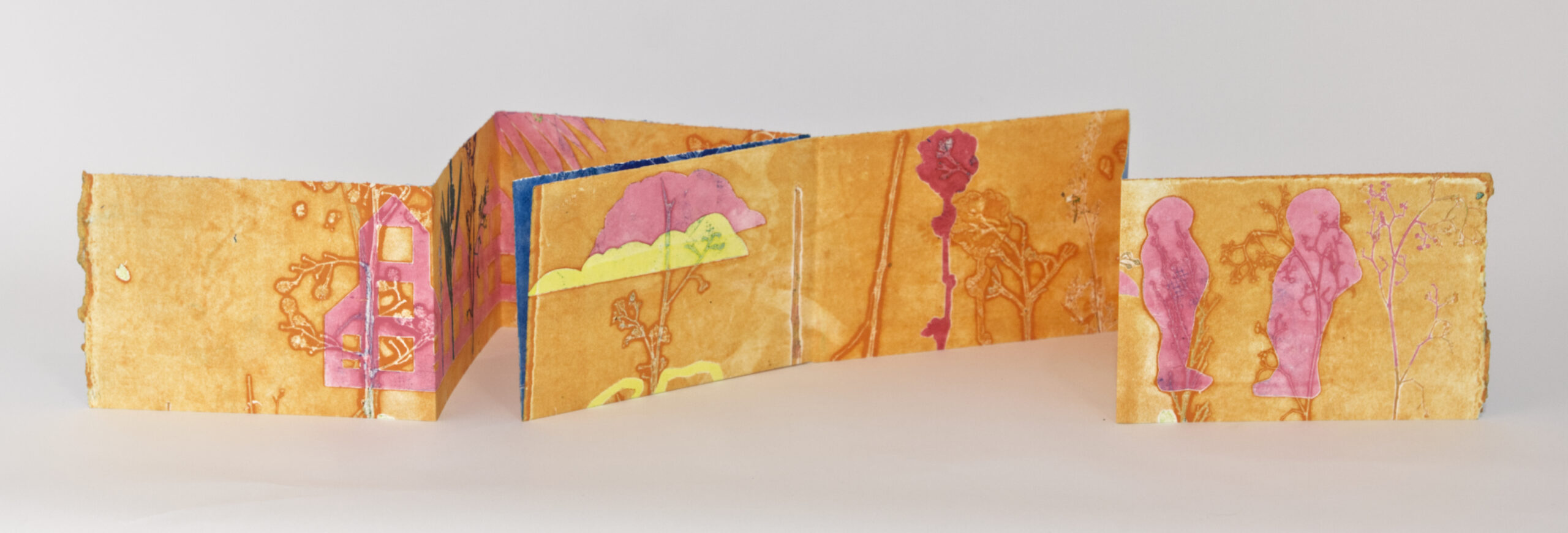
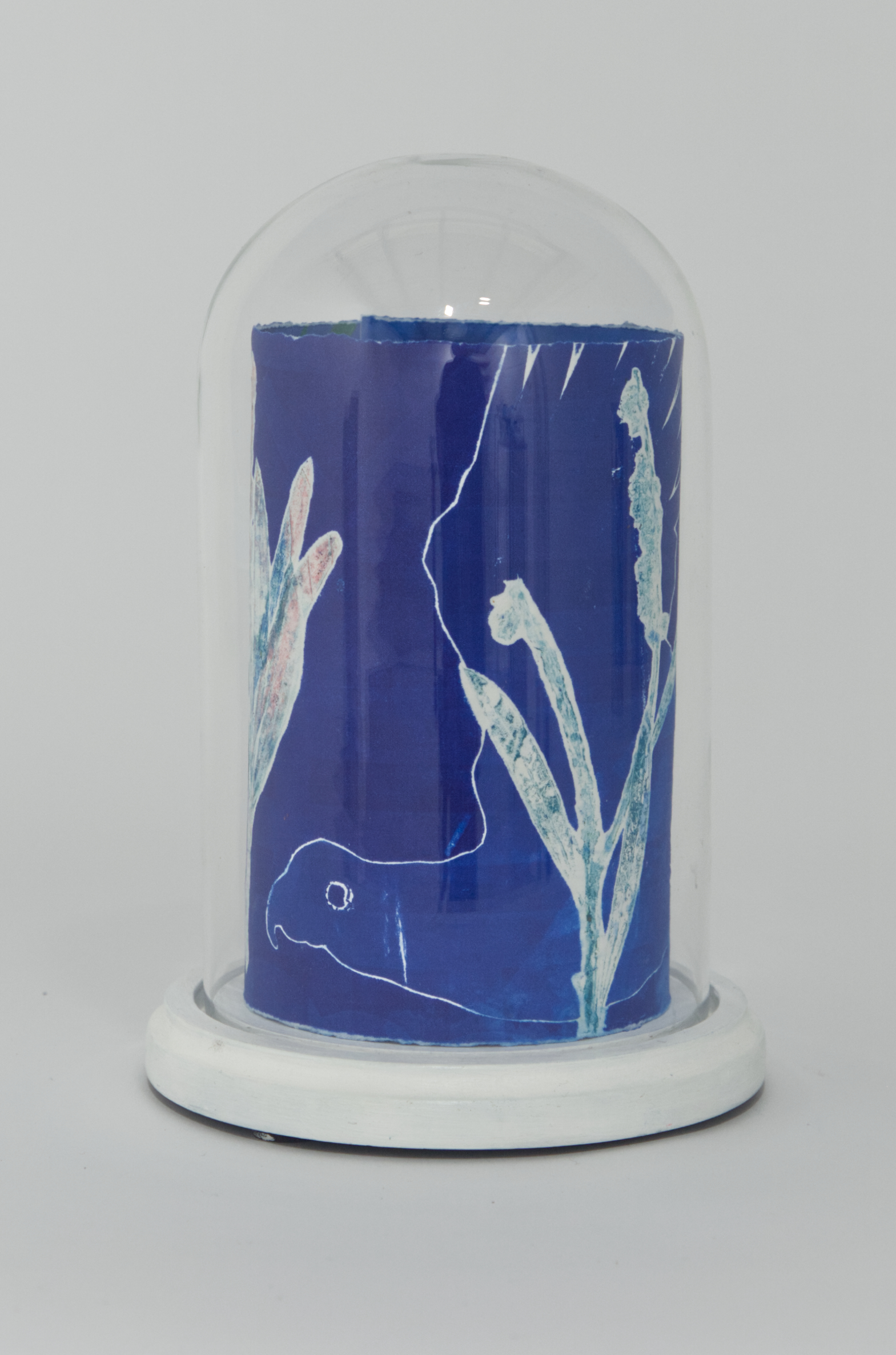
Q: What were some of the foundation ideas for this exhibition project?
A: Helen Kocis Edwards explores human/nature relationships through imagery reminiscent of story books and fairy tales referencing the history of this integration within fables.The work seeks to disrupt the human/nature binary by interweaving and connecting figures, man-made and natural elements.
An experimental, organic, layered, print process of monoprinting using native leaf species and cut out stencils from discarded plastic integrates the pieces creating a dialogue between the parts.
Kindred poses the notion that this interconnectedness has reciprocal and beneficial effects; physically, emotionally and environmentally.
Q: How did the artwork selection take place?
A: When starting a new body of work considerations are; the initial concept condensed into an artist statement, exhibition space, previous relevant work and ideas garnered when speaking with other printmakers, attending exhibitions or reading reference articles. Usually I make roughly the required amount of work. For Kindred, however, I felt my way forward through the process responding at each point to directions hinted at by each resolved print. Artists books, 2D, 3D and double side works emerged.
To make the final selection I run the resulting prints by trusted arts practitioners, non artists and sometimes children. Interestingly, although they explain their selection in different language, the choices are often similar.
Q: How does the exhibition manifest – what do visitors experience?
A: PG Gallery is situated on busy Brunswick St Fitzroy. Three eye-catching works (Yellow Figure 1 and 2 and Orange Red Figure) were selected for the front window. Once inside, the space is intimate and calm. The works are framed and unframed. They speak to each other through their content, repeated elements and colour. Unframed works allow the embossing and delicate detail within the natural elements to be more tangible. The 3D works and artist books offer different perspectives and relationships.
Q: What are some of the key works and what subject matter do they deal with?
A: Head in the Clouds 1 & 2 were the first works of 76cmh x 56cmw created then paired. Cutout figures allowed for native flora eg acacia, banksia and eucalypts to be layered within allowing a direct relationship with nature to occur and an internal human world to emerge. The stencils of simple buildings speak of an urban environment or the human version of shelter ie man made objects within wild settings.
Small works like Quoll Cloud Child and Flight allowed experiments with scale and colour of varying strengths to emerge. Red (a particular favourite) proved to be overwhelmingly problematic and needed judicious use. Green, pink and yellow were more successful leading back to their incorporation in larger works eg Yellow Figure 1 & 2
Double sided prints were used to form Artist books and 3D circular works within domes eg Blue Green Book, Orange Blue Book and Tree Figure
Q: What is it about the printmaking experience that you most appreciate?
A: More recently I have been seduced by monoprinting thanks to Printmaker, Kate Gorringe-Smith’s shared knowledge. There is only partial control over the resulting imagery, texture and colour in monoprinting, generating surprise and unpredictability.
The unique states produced in monoprinting allows for “failures” to be reimagined and altered becoming resolved prints, a 3 dimensional piece or an artist book. There is less waste of expensive, precious materials.
I share a printmaking studio with a large press, originally set up by Andrew Sinclair, with Jessi Wong and Andrej Kocis at Artery Co-operative Northcote. This professional setting encourages collaboration, development and expansion of projects.
Printmaking allows direct connection with natural spaces around us, collaboration and possibilities for new directions.
—
Kindred is at PG Gallery Fitzroy, Melbourne, 6-17 August.
—
Join the PCA and become a member. You’ll get the fine-art quarterly print magazine IMPRINT, free promotion of your exhibitions, discounts on art materials and a range of other exclusive benefits.
